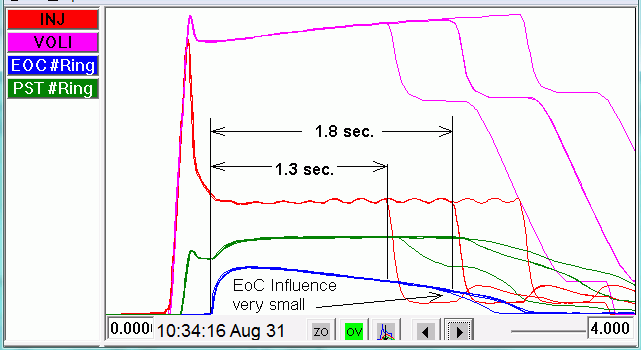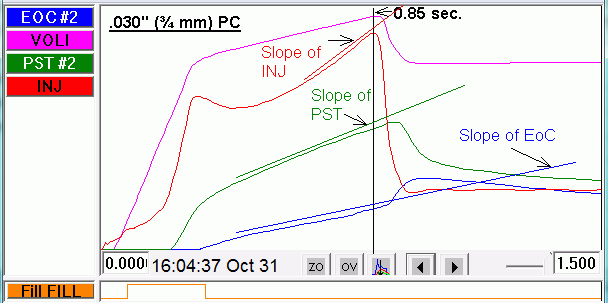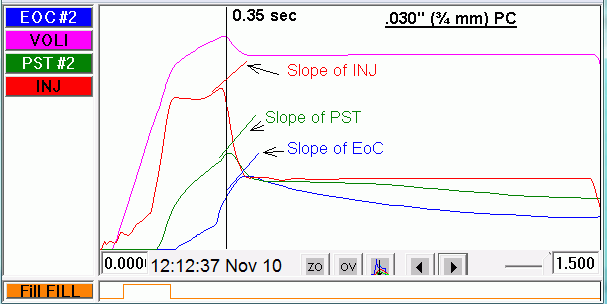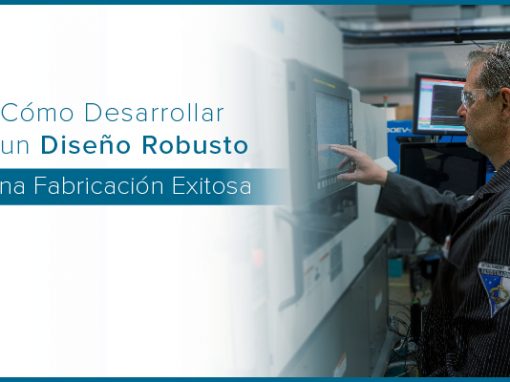Tip of the Day 181: Thin Wall Molding: The Time Barrier
If you saw the film “The Right Stuff,” you may remember their concept of the “demon that lived out beyond mach 1.”† In thin-wall molding it may help to think of that “demon” as TIME. Time to freeze during fill or shortly after during pack.
Parts made for packaging are often around 1 mm ( .040” ) thick or less. Even though the flow lengths may not be very long, any hesitation in flow will allow the wall to freeze so quickly that packing will not be possible. Or, if there is no hesitation in flow, a full and packing part has such slow flow that the part freezes very quickly after transfer.
The “time barrier” is the time beyond which you cannot influence much of the part. If you can find that time then you know that all filling and packing must be completed before it.
There are at least two ways to test or observe the freeze time using cavity pressure. One is to make adjustments in hold time or steps in hold pressure. Then observe the effect on the sensor in which you are interested. This graph is a hot runner and so there is no gate seal.

In the graph above, the “End of Cavity #Ring” sensor cannot be influenced much beyond about 1.8 seconds after the cavity is full. Even at 1.3 seconds after fill, dropping injection pressure (using hold time) has a minimal effect. The gate end still has some influence but even that is quite small after 1.8 seconds.
The second method is to observe the difference in the pressure slope for EoC relative to the injection or post gate pressure slopes.

In this graph you can see that the slope of the post gate is steeper than the end of cavity. The part is freezing so fast that the influence over end of cavity is getting weaker as it fills. In fact, the part barely fills at all and then does not really pack much after it is full.
In the graph below we have finished filling and packing the same part before 0.35 seconds instead of out at 0.85 seconds. While it is hard to pick out, you can see that the pack slopes are similar.

The slope of the EoC pressure during fill is NOT similar to the PST. This can’t be helped. There is some freezing during fill which accounts for the different slopes. And we could not fill faster because of pressure limits on the machine.
If you want to set up a decoupled 3 process, as we did above, your fill AND cavity pack time must be shorter than the wall freeze time. The point is, you need to know that time for your working melt and mold temperature.
What makes a part “thin-wall?” (The left side of the molding quadrant) Here is a working definition: a part in which packing (and maybe filling) is significantly influenced by freezing.
In thin-wall molding, a leisurely fill or pack will rouse that demon that lives out beyond the time barrier.
† The “demon” in the Bell X1 was the instability as the sonic shock wave built up. I was always intrigued by how they later discovered that the supersonic cross-sectional area profile had to include the wings as well as the fuselage. Hence the “coke-bottle” shape of modern super-sonic jets.

